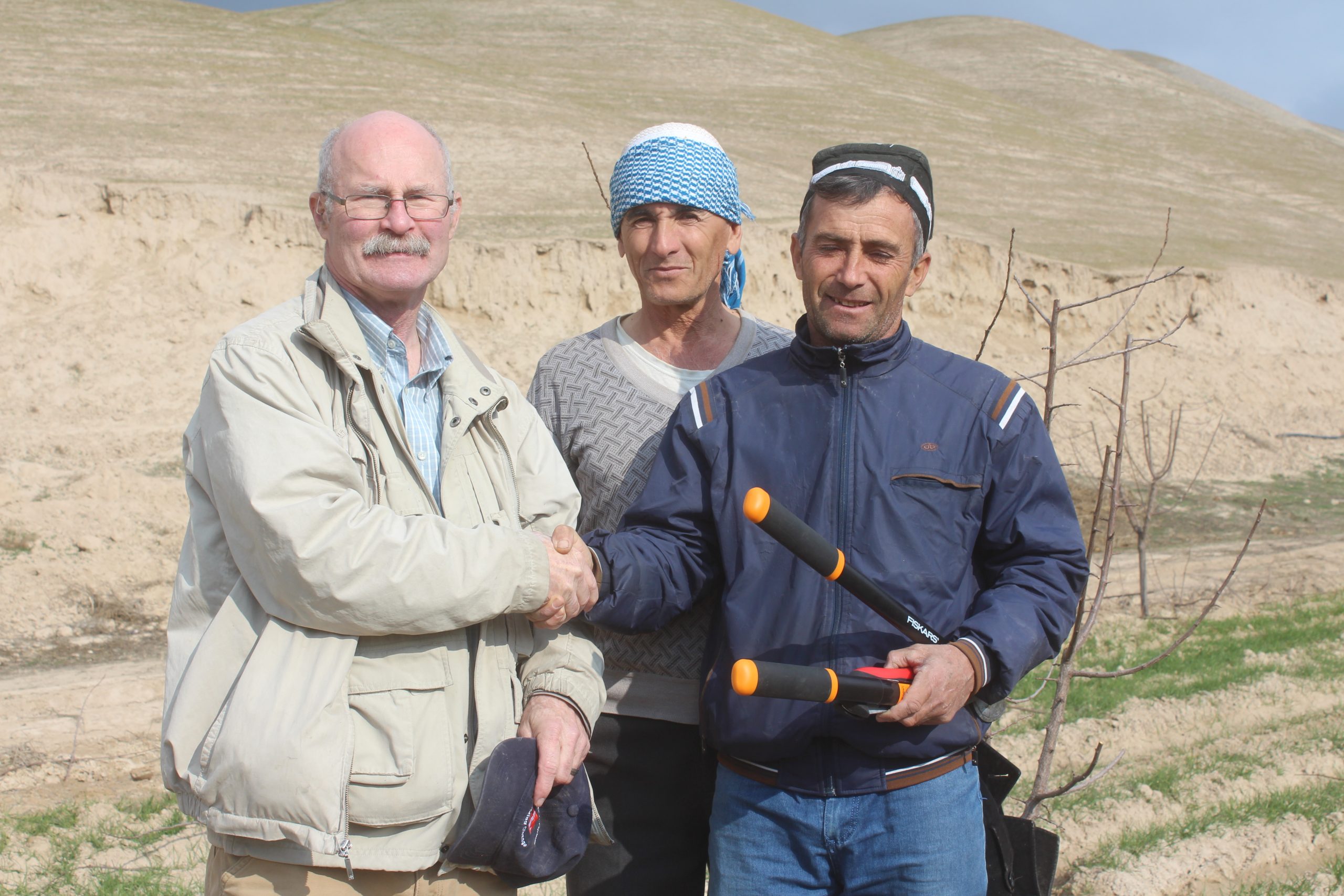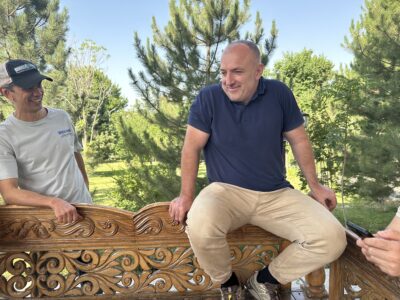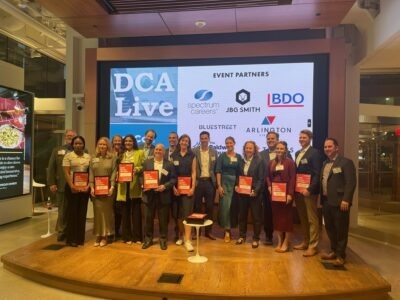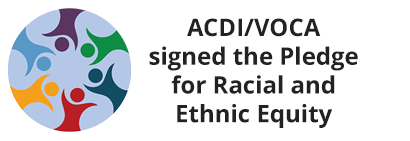
Meet Ross Penhallegon, a volunteer heading out this month on his 109th assignment. He and his wife Kate are dedicated to helping people around the globe. They’ve volunteered 1,417 days, that’s nearly four years, in pursuit of this objective. Before heading to Kyrgyzstan for their 21st trip there, we caught up with Ross to learn more about his commitment to volunteer service and what he has learned along the way.
ACDI/VOCA Communications & Outreach (C&O) Team: Tell us about yourself. Where are you from? What do you do when you’re not volunteering?
Ross Penhallegon: I was born and raised on a fruit orchard in Wenatchee, Washington. I later got four degrees, but the home orchard experience was where I learned how to grow fruit. I was an extension agent in Oregon for 34 years, working with over 500 tree fruit and nut growers; plus, I helped manage 350 Master Gardener Volunteers. When I’m not volunteering, I am helping out at the local extension office in Lane County, Oregon, or visiting our grandkids.
C&O Team: What was your first assignment, and what keeps you going back?
Ross: The first assignment was to Cholpon Alta, Lake Issykul, Kyrgyzstan, to teach a grower how to prune his apricot trees. We keep coming back because of the humble people in each country. I call it the “glint in their eyes” once they discover what pruning can do for them.
My wife Kate and I started our USAID Farmer-to-Farmer Program adventures in 2005, first going to Kyrgyzstan. I have done 55 Farmer-to-Farmer assignments and Kate has done 23.
C&O Team: What’s the greatest thing you take away from these experiences?
Ross: By teaching principles, by providing the needed equipment, each village can be successful. As we visit each village, we leave one set of loopers, a saw, and grafting knife. We say, as we present the gift to the village host, “These are for everyone in the village.” Hopefully, if people hear the gift is for everyone, the pruners will be shared.
C&O Team: You have completed 23 assignments with your wife, Kate. How does that compare to volunteering solo?
Ross: I teach how to grow food, and Kate teaches how to save money and extend the food with drying and canning. I walk into a village, and everyone is kind. They shake hands. Then the women ask, “Where is Kate?” Kate is one of very few women who come to these countries to teach the women.
[Local] women have been forgotten or are not let to come to classes. When Kate shows up, she gets the entire village showing up for her classes. Since Kate has been teaching the women, I am getting more women attending my classes too. . . . They used to stand in the back. Now the women are up front, listening very carefully.
Teaching is easy, but the implementation is very slow. In Tajikistan, I have been evaluating orchards from Dushanbe to Qurghonteppa. We started pruning classes in the south back in 2014. In 2017, 65 percent of the orchards have some kind of pruning. This December [2019], 85 percent of the orchards were pruned.
C&O Team: Why is horticulture important to communities in the developing world?
Ross: With horticulture or growing food, especially with pruning fruits, I discovered that villagers can double their income or food by simply pruning their fruit trees. Where in the world is it possible to double anyone’s income in two years . . . by pruning! Most fruit trees in villages are growing fruit on just the outside and tops of the trees. By pruning, opening up the center of the trees, this allows for [more] fruit to grow . . . over twice the space for growing fruit.
In Kyrgyzstan, as I pruned my first tree, a babushka [grandmother] came running saying I was killing her tree. People forgot how to prune; the knowledge has been lost. I saw people had no equipment, no loopers or saws or grafting knives. If we teach people how to prune, and the villagers have no equipment, nothing is gained!
Thus, I have a foundation at Oregon State University called the Ag Research Foundation, where donations can be placed. Since 2005, over $26,000 has been donated by Master Gardeners, the public, and local growers. I call it my Pruning Project. By people donating $20 (the cost of a good set of pruners), they can positively change the life of a village.
Learn more about our Farmer-to-Farmer Program in Eastern Europe, Caucasus, and Central Asia here.
Check out current Volunteer Opportunities with us here.
Comments





